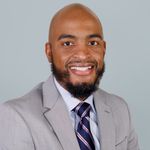Making Student Loan Programs Fair

Making Student Loan Programs Fair
A study is exploring ways to better educate students and families about their borrowing options
According to the Education Data Initiative, there are around 42.7 million students who have federal loan debt, which totals approximately $1.7 trillion. To understand some of the complex issues facing these students, BU Wheelock’s Jerry Whitmore, Jr., is studying debt forgiveness programs and state initiatives that people may not be aware about. His study is also looking into the accessibility of these programs and how they can reach historically marginalized groups. His ultimate goal is to address systemic inequities in access to higher education and financial stability.

“Loan forgiveness programs should not serve as a mere band-aid for the growing issues related to tuition hikes. Instead, policies should prioritize the question: ‘What is the most effective way to support families who require financial assistance for higher education at market rates?’” says Whitmore, an assistant professor of higher education administration. He also co-directs FAIR Student Loans with Nina Cesare of the BU School of Public Health. We spoke to Whitmore to further understand the inequities that surround federal loan forgiveness programs.
Q&A
BU Wheelock: You’re studying loan forgiveness programs. What is the challenge you’re hoping to address?
Whitmore: The primary aim of this work is to educate families about student loan debt and to draw policymakers’ attention to actionable solutions backed by rigorous research and data.
BU Wheelock: What barriers do borrowers face in accessing or qualifying for debt forgiveness programs?
Whitmore: One of the biggest obstacles to accessing or qualifying for various programs is simply being aware of their existence. Our research team discovered that many states have programs that are difficult to locate. While some programs are listed in legislative documents, others lack up-to-date information online. This issue is particularly significant because borrowers often confuse state forgiveness programs with federal ones. For example, when it comes to qualifications, many state programs require residents to have lived in the state for a certain period or to have completed a specified amount of service to the state. In contrast, the qualifications for federal programs have been changing frequently in recent years, particularly for options such as income-driven repayment (IDR) and public service loan forgiveness (PSLF).
BU Wheelock: What policy changes or improvements do you think could make these programs more equitable?
Whitmore: Currently, my team and I are investigating what effective solutions should look like. At the very least, we hope to see policy improvements that address the widening wealth gap in our country. Loan forgiveness programs should not serve as a mere band-aid for the growing issues related to tuition hikes. Instead, policies should prioritize the question: “What is the most effective way to support families who require financial assistance for higher education at market rates?” Collaboration between state and federal governments is crucial in this endeavor. Currently, there is a lack of cooperation among states, the federal government, and individual universities on how to effectively identify and assist those in need. Our process relies heavily on a student’s parental income level, which does not provide a comprehensive view of a student’s needs or the support they may receive from their families throughout their educational years.
BU Wheelock: What long-term financial and social impacts do these programs have on borrowers?
Whitmore: I’m currently working on a paper and will be attending a conference later this month. Our focus is on quality of life, which encompasses aspects like homeownership, health insurance, career prospects, and financial stability. As a recipient of the program, I became a first-time homeowner within a year of having my loans forgiven.
BU Wheelock: How do debt forgiveness initiatives influence access to higher education for future generations?
Whitmore: Currently, we lack solid data on how forgiveness programs impact accessibility for borrowers. It’s essential to recognize that many borrowers may only become aware of these programs after they have already enrolled. Families, along with high school guidance counselors, often base college financial decisions on what is immediately available or guaranteed upfront. Typically, loan forgiveness programs are tied to the type of degree a student earns upon graduation. Furthermore, we know that over 30% of students will change their major at least once during their college career.
Comments & Discussion
Boston University moderates comments to facilitate an informed, substantive, civil conversation. Abusive, profane, self-promotional, misleading, incoherent or off-topic comments will be rejected. Moderators are staffed during regular business hours (EST) and can only accept comments written in English. Statistics or facts must include a citation or a link to the citation.